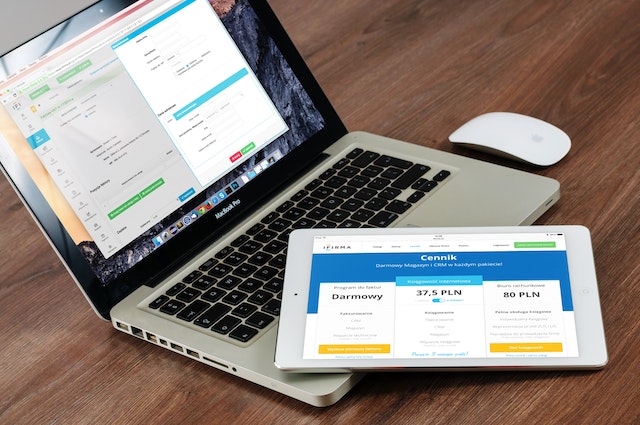Learn how to optimize your e-commerce website to improve accessibility for all users. This article covers three key areas of optimization: shopping carts, checkout pages, and payment gateways. Optimizing e-commerce accessibility goes beyond meeting regulations. It emphasizes the importance of understanding your customers’ needs and providing them with a seamless and user-friendly shopping experience.
E-commerce has revolutionized the way we shop. The convenience of buying products or services from the comfort of our homes or on the go has made online shopping increasingly popular. The problem is that most e-commerce websites are not as accessible as they should be for everyone, especially for people with disabilities.
That’s where e-commerce accessibility comes in. In this article, I’ll provide actionable tips on optimizing three key areas on e-commerce websites: shopping carts, checkout pages, and payment gateways. By following these recommendations, online merchants can create more inclusive shopping experiences for everyone.
📌Learn: Accessible Graphic Design Tips To Improve Your Website’s Usability
What is E-Commerce Accessibility?
E-commerce accessibility is the practice of designing e-commerce platforms that are usable and accessible for people with disabilities. It is not just about making the websites compliant with accessibility laws and guidelines. The focus is on understanding the needs of all users and providing easy and intuitive shopping experiences.
Let’s explore three key areas you need to address to ensure your online store is accessible to everyone who visits it.
Optimizing Shopping Carts for Accessibility
Shopping carts are an essential component of any e-commerce store, allowing users to keep track of their potential purchases as they navigate through the website. However, for users with disabilities, the shopping cart experience can be frustrating and inaccessible.
Here are some considerations that can help optimize accessibility in this regard:
1. Descriptive labels for buttons and form input fields
Shopping carts are made up of web-based forms, which consist of data tables and form data. To make them accessible for people with disabilities, explicitly label all form input fields, including checkboxes, radio buttons, and dropdown menus. This allows screen readers to easily identify and announce what each field represents.
All buttons must also have clear and concise text that explains the action they trigger. This way, customers do not have to guess what each button does. This benefits everyone and is particularly important for people with cognitive disabilities who struggle to understand abstract concepts.
2. Easy product modification options
Users on your e-commerce website need to be able to modify their product selections in the shopping cart. But if the option to do this is not easy to locate or use, it can create a frustrating experience for users, especially those with disabilities. To avoid this, use a simple and intuitive interface that allows users to modify their products without needing to click through too many elements
3. Accessible error messages and feedback
When a user encounters an error in the shopping cart, it is crucial to provide clear and accessible error messages. Remember that people with visual or hearing disabilities may not see or hear these messages. So, consider adding alternative cues such as color changes, icons, or audio descriptions to indicate errors.
Users should also get clear feedback when they add or remove items from the shopping cart. Simple messages such as “Product Added to Cart” or “Product Removed from Cart” can be helpful for all users, especially those who rely on screen readers, to keep track of their actions within the shopping cart.
Enhancing Checkout Pages for All Users

Checkout pages are one of the most critical parts of the e-commerce user experience. They are the final step in the customer journey and can make or break a sale. When they are accessible, all users can complete their purchases smoothly. Here’s what you should do:
1. Make the checkout process simple
When a user encounters an error in the shopping cart, it is crucial to provide clear and accessible error messages. Remember that people with visual or hearing disabilities may not see or hear these messages. So, consider adding alternative cues such as color changes, icons, or audio descriptions to indicate errors.
Users should also get clear feedback when they add or remove items from the shopping cart. Simple messages such as “Product Added to Cart” or “Product Removed from Cart” can be helpful for all users, especially those who rely on screen readers, to keep track of their actions within the shopping cart.
2. Provide multiple payment methods
Select a payment gateway that supports different payment methods, such as credit cards, debit cards, PayPal, Apple Pay, or Google Wallet. This improves accessibility for users who may not have access to some payment methods. It could also increase the likelihood of conversions since customers are more likely to complete a purchase when their preferred payment option is available.
3. Provide accessible CAPTCHA options
CAPTCHAs (Completely Automated Public Turing tests to tell Computers and Humans Apart) are necessary to prevent fraudulent transactions and protect user data. But, they can be difficult for users with disabilities to complete, especially those who are blind or have low vision. There are several ways you can make CAPTCHAs more accessible.
You can use audio CAPTCHAs, which reads a question aloud to the user, who provides the answer by speaking into a microphone. Alternatively, image CAPTCHAs (visual puzzles where the user selects the answer from a list of options) can help more users complete the verification process and complete transactions on your website without difficulty.
Ensuring Payment Gateways Accessibility
A payment gateway is a virtual point-of-sale terminal that enables secure fund transfers between online merchants and buyers. Security is a vital concern for any payment gateway, but it should not come at the expense of accessibility. Here are a few tips to follow:
1. Choose an accessible payment gateway
Your payment gateway should support keyboard accessibility, be compatible with popular screen readers, and offer support for other assistive technology. It should also use a clean and simple user interface with clear instructions. These features greatly improve usability for all users, not just those with disabilities.
2. Optimize for mobile devices
Most customers prefer shopping on their smartphones, and studies show that 61% of customers are unlikely to return to an inaccessible website. So, t avoid losing potential customers, ensure that the payment gateway you choose is mobile-friendly and optimized for different screen sizes.
3. Provide superb customer service
Provide support features, such as live chat or help articles, to assist customers with any issues they may face while using the payment gateway. Keep in mind that satisfied customers are more likely to return and refer others to your website. Also, positive reviews can help improve your website’s overall reputation and search engine rankings.
Testing E-Commerce Accessibility
An accessible website opens your business to a broader audience and could improve your sales, customer loyalty, and brand reputation. So, how can you test the accessibility of your e-commerce website?
You must understand that accessibility testing goes beyond getting a ‘pass’ score on an automated checker. These tools are great for finding common accessibility errors on your website. However, they may miss certain types of accessibility issues that require manual testing conducted by accessibility experts.
Equally AI provides comprehensive accessibility testing services for e-commerce websites. Our specialists combine automated and manual testing methods to help you to identify and address accessibility issues on your website. Our priority is to help you meet the highest accessibility standards and provide a seamless shopping experience for all your customers.
Conclusion
Accessible e-commerce is no longer a niche concern and has become essential to digital business growth. Prioritizing accessibility is not just about accommodating disabilities but also about creating a welcoming and user-friendly environment for everyone. When visitors can navigate your website with ease, they are more likely to feel valued and appreciated.
At Equally AI, we understand the importance of accessible e-commerce and are committed to helping you create inclusive digital experiences. Contact us today to learn more about our accessibility services and how we can help your business grow.



